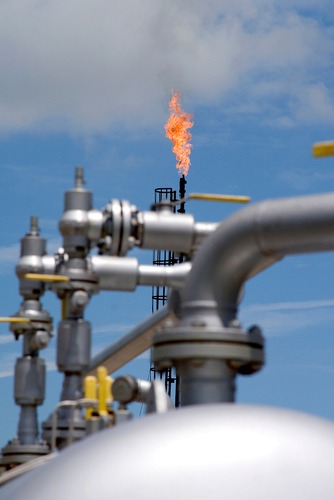IAE report finds methane emissions from energy sector should start dropping this year

A new report from the International Energy Agency (IEA) finds that methane emissions from the energy sector were near a record high in 2023 but have the potential to start dropping due to recent policies and regulations.
The IEA’s latest Global Methane Tracker found that the production and use of fossil fuels resulted in close to 120 million tonnes of methane emissions in 2023 – up slightly from 2022. Another 10 million tonnes of methane emissions came from bioenergy, mostly from the traditional use of biomass for activities such as cooking.
The report revealed that the top 10 emitting countries were responsible for around 80 million tonnes of methane emissions from fossil fuels in 2023, which is about two-thirds of the global total. The United States – the largest global producer of oil and gas – is also the largest emitter from oil and gas operations, followed by Russia. China is the highest emitter in the coal sector.
At their present levels, global methane emissions remain far too high to meet international climate targets. To limit global warming to 1.5 °C, a key goal of the Paris Agreement, methane emissions from fossil fuels need to decline by 75 percent this decade, according to the IEA.
“A 75% cut in methane emissions from fossil fuels by 2030 is imperative to stop the planet from warming to a dangerous level. I am encouraged by the momentum we’ve seen in recent months, which our analysis shows could make an enormous and immediate difference in the world’s fight against climate change,” IEA Executive Director Fatih Birol said. “Now, we must focus on transforming commitments into action – while continuing to aim higher. Well known policies and existing technologies could reduce methane emissions from fossil fuels substantially. The IEA stands ready to help the energy sector meet its goals by deploying these measures, and we will continue to monitor progress – a key part of our wider efforts to ensure countries deliver on the energy promises they made at COP28.”
The good news is that efforts to reduce methane emissions are expected to accelerate in 2024 and beyond. The COP28 climate conference last year was a big step forward as nearly 200 governments agreed to “substantially” reduce methane emissions by 2030. Further, significant regulatory initiatives were announced by Canada, the European Union and the United States around the time of the summit. Also, more countries are joining the Global Methane Pledge – including, most recently, Azerbaijan, which will host COP29. In addition, more companies have committed to action through the launch of the Oil and Gas Decarbonisation Charter.
If the methane pledges made by countries and companies to date are implemented in full and on time, it would cut methane emissions from fossil fuels by 50 percent by 2030. However, that is a big if as most pledges are not yet backed up by plans for implementation.
Methane is responsible for almost a third of the rise in global temperatures since the Industrial Revolution. The energy sector – including oil, natural gas, coal, and bioenergy – is the second-largest source of methane emissions from human activity. Thus, driving down methane emissions is one of the best ways to limit global warming and improve air quality in the near term.
